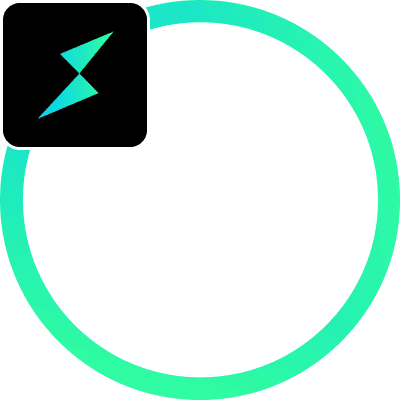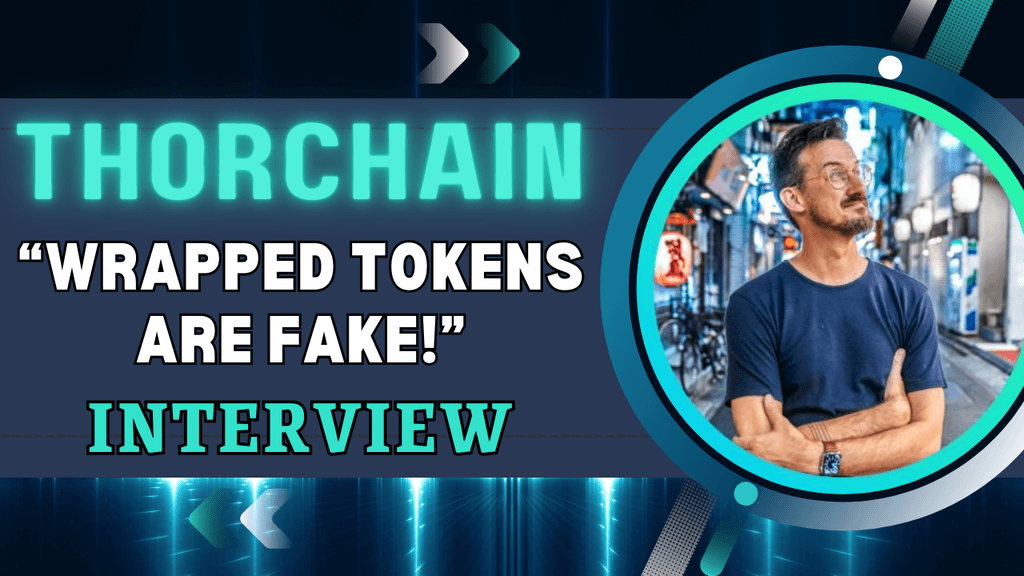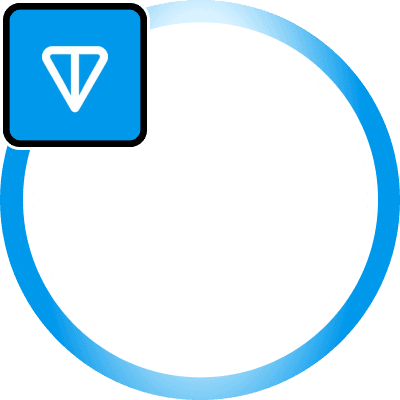Introduction
Thorchain is a decentralized liquidity protocol that enables the exchange of assets across various blockchains in a non-custodial manner. The protocol is built using the Tendermint consensus engine, Cosmos-SDK state machine, and GG20 Threshold Signature Scheme (TSS), Thorchain operates as a Layer 1 cross-chain decentralized exchange (DEX) secured by its native token, RUNE.
In January 2025, Thorchain faced significant challenges related to its lending and savings mechanisms, resulting in insolvency concerns and a restructuring period. Despite these issues, Thorchain continues to be a foundational protocol for decentralized liquidity and cross-chain interoperability.
Key Components
The core components of Thorchain include:
-
Tendermint Consensus Engine: Enables Byzantine fault tolerance (BFT) to maintain network security and consistency across nodes.
-
Cosmos-SDK: Provides scalability and interoperability with other blockchains, allowing Thorchain to integrate seamlessly within the broader blockchain ecosystem.
-
GG20 Threshold Signature Scheme (TSS): Ensures secure fund management in on-chain vaults without requiring traditional multi-signature wallets.
-
Asgard Vaults: On-chain vaults used to store and manage assets, controlled collectively by validator nodes, ensuring decentralized asset custody.
-
THOR.RUNE Token: The native token used for securing the network, facilitating liquidity pool participation, and serving as a settlement base pair for all swaps.
These components enable Thorchain to function as a robust, decentralized cross-chain liquidity protocol.
Liquidity Pools and Swaps
Thorchain’s liquidity pools enable users to deposit assets and facilitate cross-chain swaps. These pools support a variety of native crypto assets, such as Bitcoin, Ethereum, Binance Chain, Avalanche, Cosmos Hub, Dogecoin, Litecoin, and Bitcoin Cash, as well as the various tokens that are native to those chains.
Users can deposit liquidity symmetrically (equal parts RUNE and another asset) or asymmetrically (one asset), each method having distinct advantages. Liquidity provision plays a central role in Thorchain’s functionality as a decentralized exchange.
Impermanent Loss Protection
Impermanent Loss Protection (ILP) was previously available for liquidity providers but was discontinued for new dual LP deposits at block 9450000. Existing deposits prior to this block will continue to receive ILP indefinitely. The introduction of Savers Vaults has changed the dynamics of liquidity provision by providing alternatives to traditional dual-sided LP positions.
THORChain Insolvency and Restructuring (2025)
In January 2025, Thorchain entered a period of financial instability, raising concerns about its solvency. The primary issue stemmed from the protocol’s lending and savings features, introduced through its THORFi services. These mechanisms allowed users to collateralize Bitcoin (BTC) and Ethereum (ETH) to borrow USD-denominated debt without interest, liquidations, or expiration. While innovative, the design exposed the protocol to systemic risks tied to the price of its native token, RUNE.
Causes of the Insolvency
Key vulnerabilities in the lending design included:
-
Minting and Burning RUNE: Collateralized BTC and ETH were used to mint RUNE, creating a dependency on RUNE’s price for stability.
-
Repayment Dynamics: Loan repayment required burning RUNE, which directly affected its supply dynamics.
-
Price Declines: Declining RUNE prices created a self-reinforcing cycle, as liabilities exceeded available assets.
Financial Details
By early 2025, liabilities in Bitcoin and Ethereum collateral exceeded the available reserves in Thorchain’s liquidity pools:
-
BTC: 1,604 BTC owed, with only 592 BTC in liquidity pools.
-
ETH: 18,258 ETH owed, with 7,404 ETH in liquidity pools.
-
Shortfall: Unmet liabilities totaled over $24 million USD, while available liquidity was approximately $22–$23 million.
To mitigate further risk, validators paused all THORFi services, including lending and savings, and implemented a 90-day restructuring plan.
Proposed Solutions
Community members and developers proposed several measures to stabilize the protocol:
-
Tokenizing Debt: Converting lending and savings claims into tradeable debt tokens.
-
Recovery Rights Tokens: Issuing tokens that pay creditors a percentage of Thorchain’s protocol fees until debts are repaid.
-
Unwind Module: Automatically allocating 10% of system income toward debt repayment.
-
Secondary Markets: Allowing debt tokens to be traded peer-to-peer.
-
Liquidity Provider (LP) Protection: Prioritizing LPs to maintain liquidity for swaps.
Outcome
These measures aim to address the insolvency risks while preserving Thorchain’s long-term viability. As part of the restructuring, the protocol has sought to return to first principles, focusing on decentralized liquidity provision and cross-chain interoperability.
Current Status
As of early 2025, THORFi services, including lending and savings programs, have been paused to prevent further instability. Validators initiated a 90-day restructuring plan to address insolvency risks and propose solutions such as tokenizing debt and prioritizing liquidity providers.
Integration with THORSwap Protocol
THORSwap is built on Thorchain’s cross-chain liquidity protocol, which enables the platform to offer native asset swaps and seamless integration with multiple blockchains. By leveraging Thorchain’s innovative technology, THORSwap eliminates the need for users to rely on centralized exchanges for transferring crypto assets.
THORSwap Use Cases
-
Permissionless Cross-Chain Swaps: Simplifies asset trading across blockchains.
-
Liquidity Provision: Enables users to contribute assets to Thorchain liquidity pools.
-
Asset Management: Facilitates cross-chain asset management without intermediaries.
User Interface and Wallet Support
THORSwap’s user-friendly interface simplifies the process of conducting cross-chain swaps for both experienced and novice users. The platform supports six wallet types for seamless integration with different blockchain networks, including MetaMask, Trust Wallet, Ledger, Trezor, WalletConnect, and Keystore.
Regulatory and Tax Considerations
When adding liquidity asymmetrically, it can be considered either a taxable event on half of the user’s position or a non-taxable event, as users do not swap assets before adding them to the pool. However, it becomes a taxable event when withdrawing the deposit. The tax implications depend on the legislation in a user’s country and the position taken by the taxpayer.
RUNE Token
$RUNE is the native token of Thorchain and serves as the backbone of its ecosystem. With a supply cap of 500 million, RUNE has several critical roles within the protocol:
-
Settlement: RUNE acts as the base pair in all Thorchain liquidity pools, enabling swaps between different assets by routing through RUNE.
-
Security: Node operators are required to bond RUNE equal to twice the value of the assets they manage in liquidity pools. This bonding ensures that node operators have significant financial stakes in the network’s integrity.
-
Liquidity Provision: Each liquidity pool maintains a 1:1 ratio of RUNE to the paired asset. For instance, a pool with $100,000 in Bitcoin must also hold $100,000 worth of RUNE. This design enhances stability and incentivizes RUNE holders to participate in liquidity pools.
-
Governance: RUNE holders influence the protocol’s direction by prioritizing which pools and chains to support through their liquidity commitments.
-
Incentives: Liquidity providers and node operators are rewarded in RUNE through swap fees and block rewards, which follow a predefined emission schedule.
Tokenomics and Supply Dynamics
RUNE’s tokenomics are closely tied to Thorchain’s operations and growth:
-
Supply Cap: RUNE’s maximum supply is 500 million tokens, ensuring scarcity.
-
Minting and Burning: The protocol uses a minting and burning mechanism for RUNE, particularly in lending operations. Minting occurs when collateral is added, and burning happens during loan repayments under favorable conditions.
-
Network Security: The 2:1 bonding ratio ensures that node operators have more RUNE bonded than liquidity pools contain, creating strong economic security.
Role During Crises
RUNE’s role in the ecosystem became especially evident during the January 2025 insolvency crisis. The token’s price volatility, tied to the minting and burning mechanics in THORFi lending, highlighted the risks of over-reliance on RUNE as collateral. The protocol has since paused lending services and is undergoing restructuring to create a more sustainable economic model.
RUNE remains central to Thorchain’s operation, ensuring decentralization, security, and liquidity while aligning economic incentives across participants in the ecosystem.










